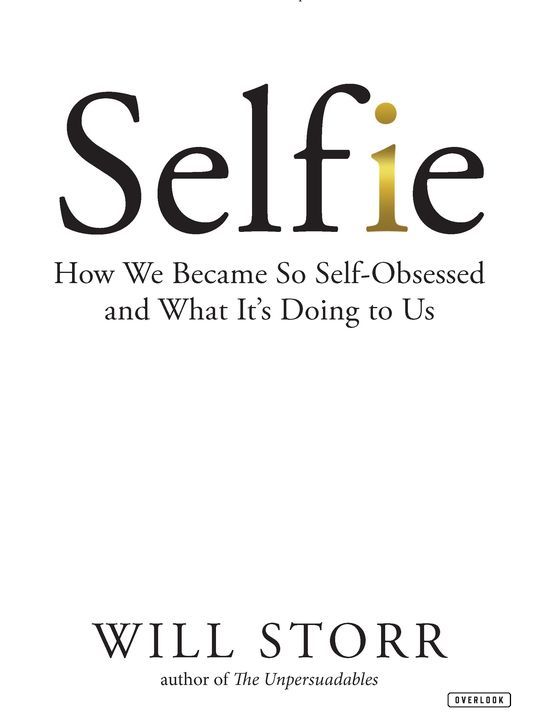Selfie-Centered Us

Spoiler alert: Despite its trendy title, Selfie is not a frivolous book about taking photographs of oneself and littering social media with them, although this pastime is examined.
In fact, the opening chapter addresses a topic that is at once related and quite different from egotistical celebration — suicide, or the obliteration of oneself.
In his latest book, Will Storr (The Heretics) strives to fathom personhood: i.e., who we are and how we became that person. Along the way, the British journalist and novelist seeks to better understand himself as well as others, including a mobster who has turned to Jesus.
Among other adventures, he checks himself into a Benedictine monastery in Scotland and endures six days of encounter therapy at the Esalen Institute in California, once frequented by self-seekers including Jane Fonda, Natalie Wood and Charles Manson.
"Selfie: How We Became So Self-Obsessed and What It’s Doing to Us" is an ambitious survey of the influences that make us who we are. In addition to his own experiences and insights, Storr draws on scholarly literature and interviews experts on the human personality.
He ably synthesizes centuries of attitudes and beliefs about selfhood, primarily in western thought, from Aristotle, John Calvin and Freud, to Sartre, Ayn Rand and Steve Jobs. His straightforward prose and personal anecdotes make all of it eminently digestible.
A good deal of what is covered herein is intuitive, such as: We care what others think about us; we want to be like people who are more successful or thinner than we are; and we each create our own narrative, often highly fictionalized, about who we are. Trouble can erupt when our heroic self-stories clash with reality.
So who are we, after all? Storr can cut through the swirl of intellectual theorizing and cultural pressures in one sentence, such as this one: “We have a self for work and a self for home, a self for lonely restaurants and a self for roadside diners; a self for Twitter and a self for Facebook, a self for the plumber and a self for the mayor…”
The author himself confesses to being a victim of “social perfectionism” and the unrealistic expectations it can burden people with. He cites studies that link the rise of social media to, among other things, an increase in eating disorders and body dysmorphia. Once “keeping up with the Joneses” meant measuring ourselves against immediate neighbors; today, technology connects us with an inexhaustible number of inimitable Joneses.
If Storr can rattle on a bit, as he does in covering the rise of the self-esteem movement, his chronicle generally is crisp and compelling. He is appropriately skeptical of some of the ideas and developments he recounts, including the recent quest, championed by some mega-wealthy tech moguls, of creating better, perhaps “perfect” selves by fiddling with the human genetic code.
The author is at his best when he throws his own experiences into the mix. Despite being a justly acclaimed writer, Storr clearly wrestles with great expectations and confesses to bouts of depression and self-loathing: “I seem to be caught in a lifelong rhythm of expecting more from myself than my talent and character can supply…”
The solution, Storr concludes, is to drop out of the perfectionist rat race, essentially to chill: “You’re limited. Imperfect. And there’s nothing you can do about it.”